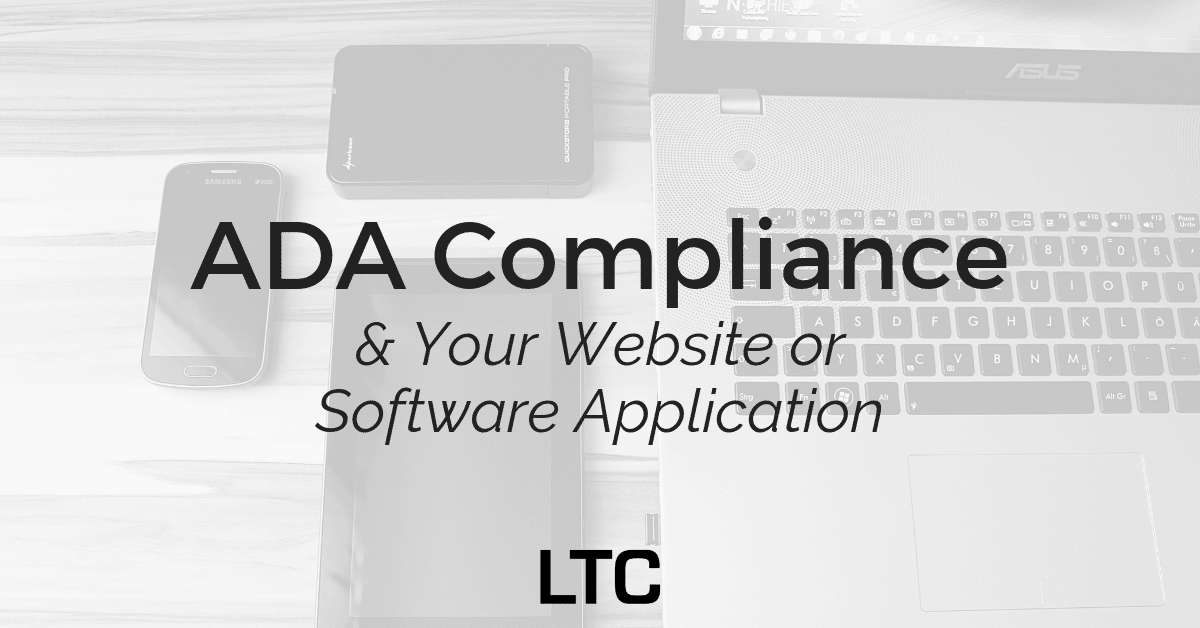The Americans with Disabilities Act (ADA) was passed in 1990 to help ensure individuals with disabilities had full access to accommodations. At the time, accommodations referred to more physical in nature – access to elevators, ramps for wheelchairs, wide aisles for navigating, and services and communication.
Now that our world has gone digital, however, ADA compliance has moved beyond the physical accommodations and into the digital ones. ADA compliance now extends to websites, software, and even mobile applications. Why? Individuals with disabilities are using them just as frequently as those without. These applications are quite literally opening doors and communication methods to those for whom it was previously unavailable.

What does this mean for your business? Well, in 2018, there were more than 1,000 lawsuits related to website accessibility. That number has only started to increase for 2019, and it’s beginning to encompass all programs. Primarily focused on commercial websites so far, several U.S. courts have found in favor of the complainants citing corporations, including Winn-Dixie, Nike, and Hershey’s to comply with ADA regulations regarding communication aids. Since many individuals use assisted devices to access the online world, focus on alternative text, video captioning, and visual/color standards are currently the key focus. While we’d love to provide an exhaustive, tested list, the truth is that the standards are ever-changing and shifting to keep pace with modern technology.
A complete audit as well as manual and automated testing are recommended for individual platform and site compliance.
Key Focus Points for ADA Compliance:
- Text Size
- Video Closed Captioning
- Keyboard Navigation
- Legible Fonts
- Image Alt Text
- Color Contrast Ratios
Becoming ADA compliant in these main areas allows screen reading software to describe images to visually impaired users, allows hearing impaired users to read video captions, and allows those with poor eyesight to view your website or application easily. While manual testing is recommended, there are lots of great tools out there to locate potential infractions: https://www.w3.org/WAI/ER/tools/ or test it out here: https://www.webaccessibility.com/.
As technology and innovation continues to occur at record pace, it’s more important than ever to ensure your applications can be used by all users. It will also save you in potential future litigations and customer satisfaction by making improvements now.
Questions about ADA compliance? Wondering if your website or software application is ready? Get in touch today!
